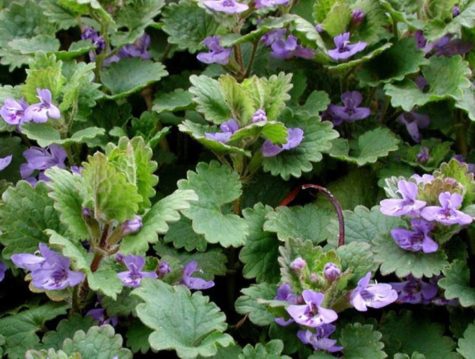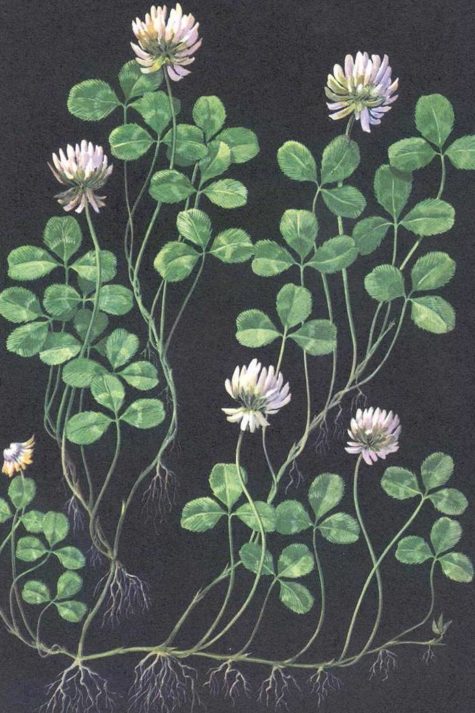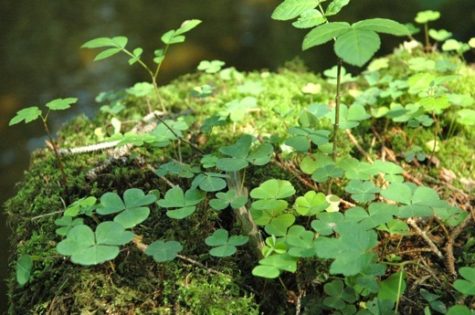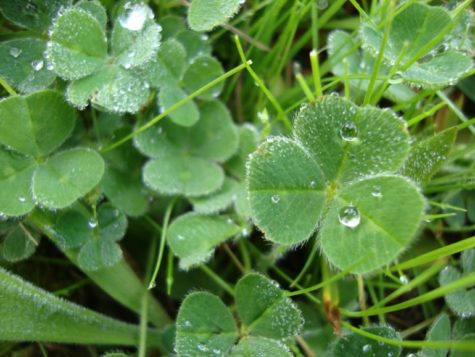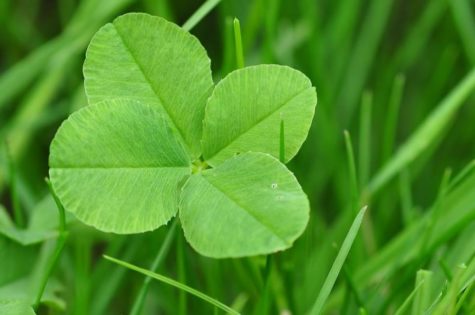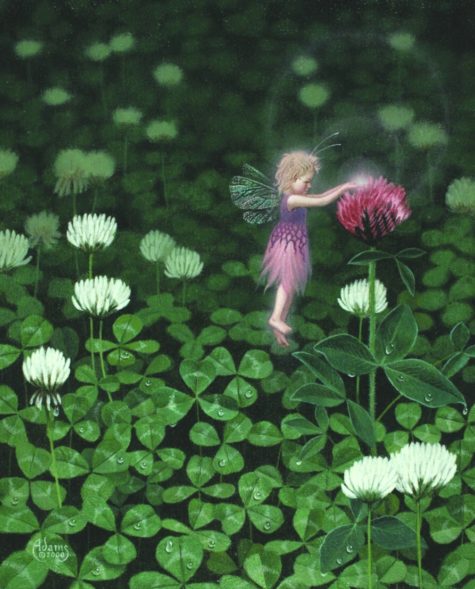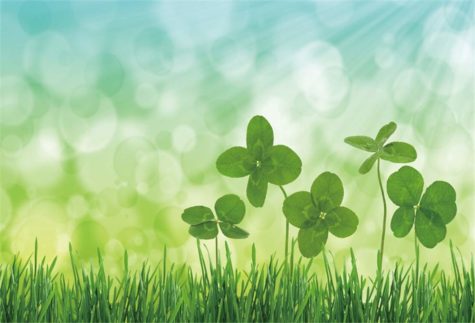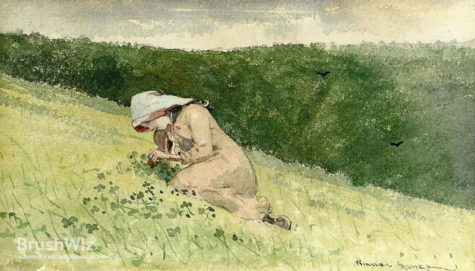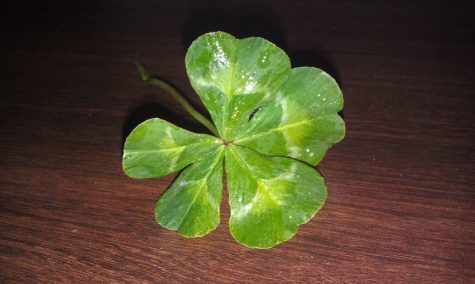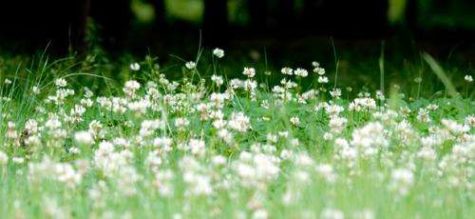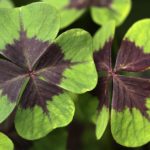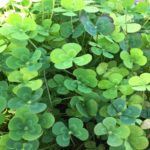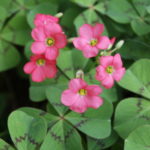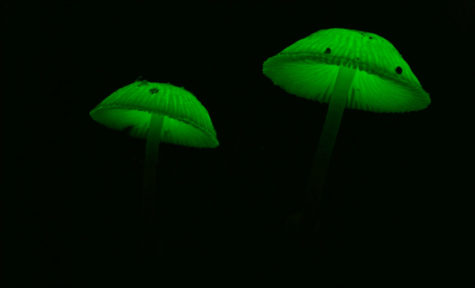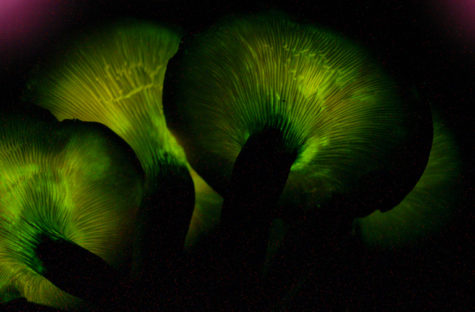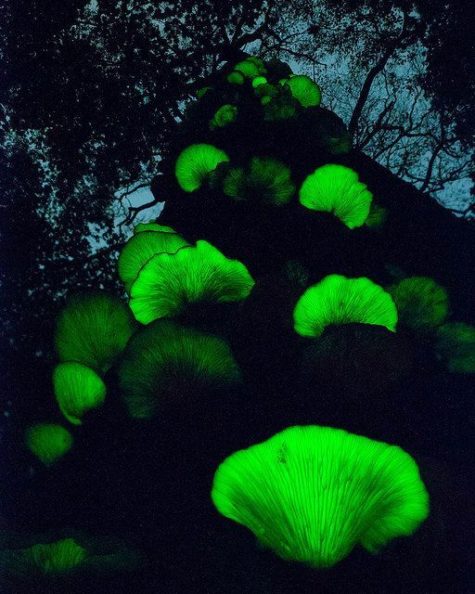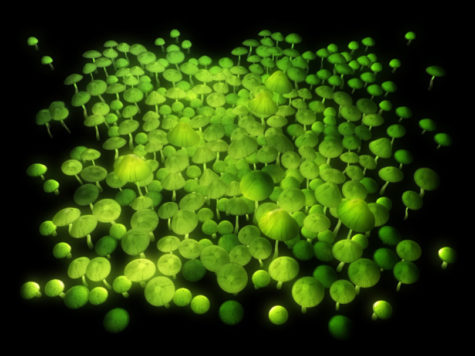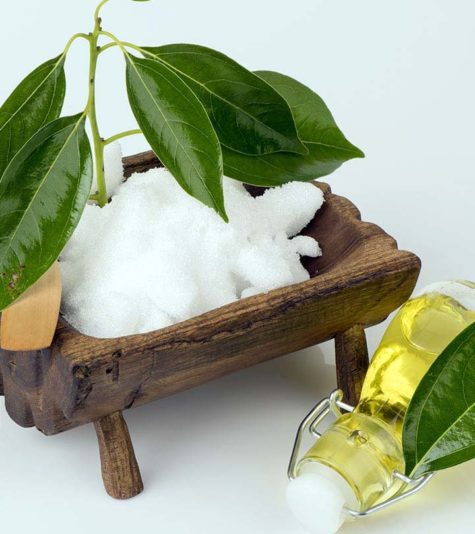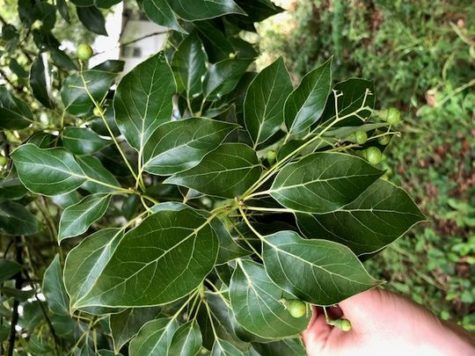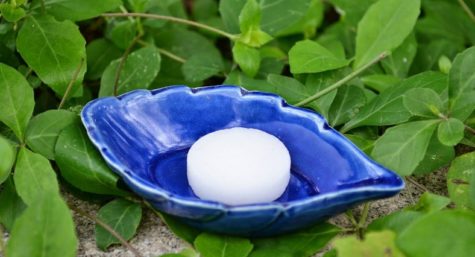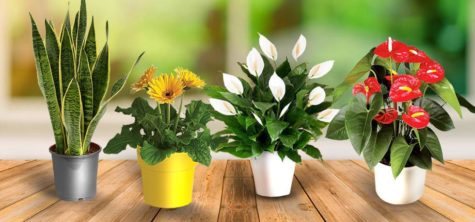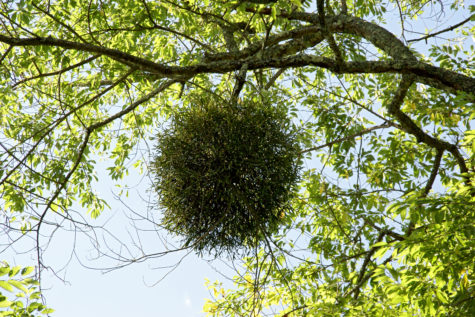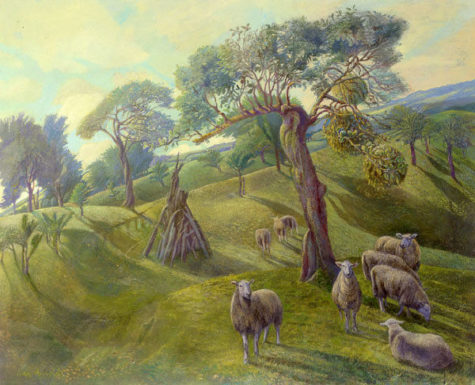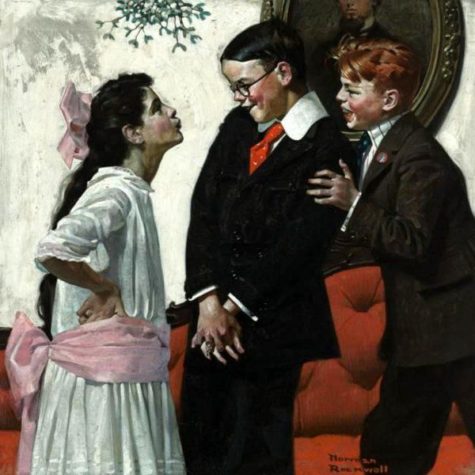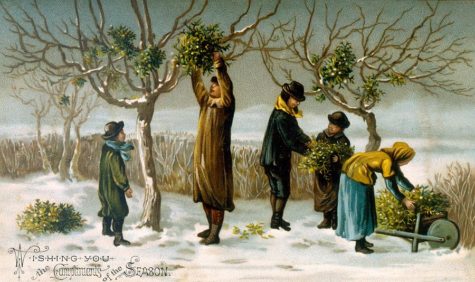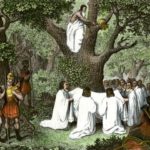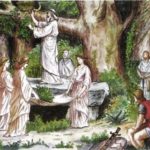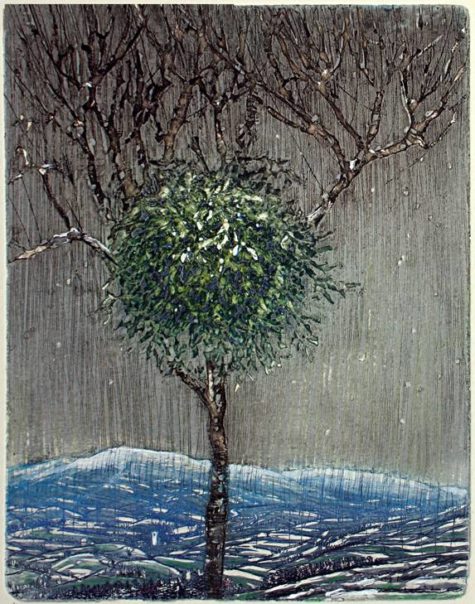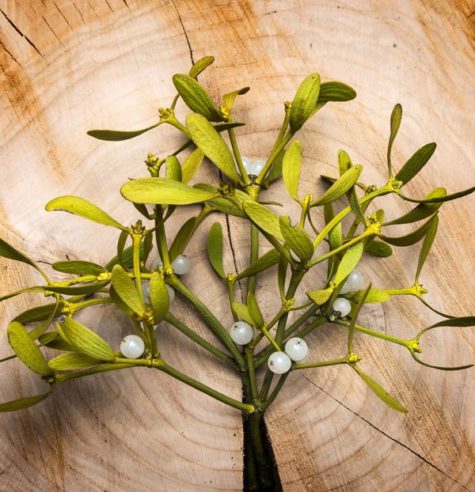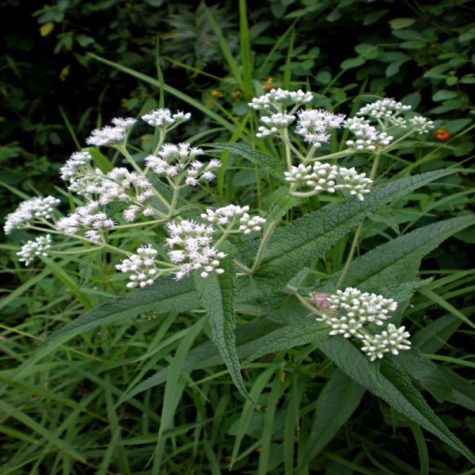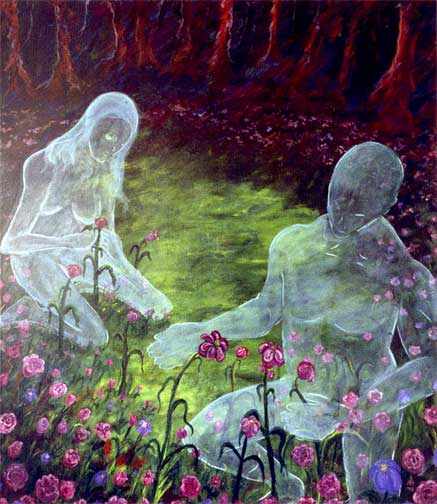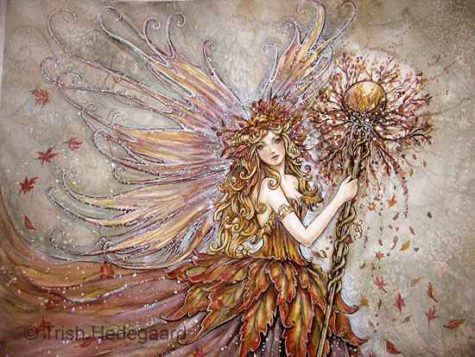Plants
If you are pursuing a spiritual or magical alliance with a specific plant, this is best accomplished with a living plant, redolent with power and consciousness, rather than processed, dried plants that retain power but lack conscious intelligence.
You can grow plants necessary for magick spells and/or physical healing. As you nurture the plant – communicate with it: share your fears and desires, let the plant know what you want from it. These plants will potentially provide more power for you than any others. They become your partners in healing and magic. It is a symbiotic relationship: they care for you as you care for them.
In many cases if you want to work with a plant, you’ll have to grow it. that’s the only way it is guaranteed to be available. The plant realm is as ecologically devastated, if not more so, than the animal kingdom. Many plants are extinct or seriously endangered. The only way to work with some magical plants (Solomon’s Seal or Low John the Conqueror, for example), the only way to incorporate them into any spell is to grow and nurture them. It is the only way their power will be available to you.
Also known as Creeping Charlie, Ground ivy has a strong connection with the powers of magick and divination. Folk names include:
- Alehoof
- Catsfoot
- Field balm
- Gill-by-the-ground
- Gill-over-the-ground
- Hay-maidens
- Hedge-maids
- Jenny-run-by-the-ground
- Lizzy-run-up-the-hedge
- Run-away-robin
- Tunhoof
Ground Ivy is bound to Saturn and water. It is used in magick mostly for divination purposes either by burning dried leaves, by using the oil to anoint a divinatory tool, such as a deck of Tarot cards or by drinking fresh or dried leaves in a tea.
Sachets, charms and teas made of fresh or dried ground ivy can be worn for help in rebuilding when you have given too much, as protection from theft, and for fidelity, honesty, and weddings or new love.
Considered a safeguard against sorcery it was worn by milkmaids when first milking cows in the pastures. A magic charm, it was used to prevent the cows from enchantment. In many regions the first milking of the cows was actually done through a wreath of ground ivy.
Other magical uses of ground ivy included promoting sleep, meditation, healing, love, friendship and fidelity. The ritual use of ground ivy was popular and the herb was often woven into crowns and garlands to be worn on Midsummer’s Eve.
Ground Ivy is very powerful in protection against evil magick and psychic attacks. Using this herb will help you in identifying other witches and will help you reveal who is using negative magick against you.
“To find out who might be using negative magic against you, place some ground ivy around the base of a yellow candle. Burn the candle on a Tuesday and the person will then become known to you.”
~Scott Cunningham
A tea of Gill-over-the-Ground may be sipped to help overcome shyness. Strewing leaves of this herb about the floors of your home is said to promote serenity and peaceful dreams.
If you celebrate Beltane, weave some stems and flowers into your crown. Pick an alias name for it that appeals to you—my personal favorite is Gill-over-the Ground. Repeat it several times until it rolls nicely off your tongue and sounds almost exotic. And, if you must pluck some of it, at least stop and pay homage to the myriad of uses of it throughout time. Ground ivy, a small herb with great determination!
Sources:
- Folk Names: Trefoil, Honeystalks, Three-leafed Grass
- Ruler: Jupiter, Mercury
- Element: Earth, Air, Fire, Water
- Types: Red, White
- Magickal Forms: Three leaf, four leaf, and five leaf
- Basic Powers: Protection, Luck, Fertility, and Abundance
Clover was one of the anti-witch plants which protected human beings and animals from the spells of malevolent witches and the wiles of fairies, and brought good luck to those who kept it in the house, or wore it in their buttonholes or hats. Some varieties of clover have three distinctly heart shaped leaves ~ both elements, the number 3 and the shape, contribute to its benevolent reputation.
The shamrock, the form of clover that is synonymous with all things Irish – was known as the shamrakh in Arabic countries and symbolized the triple aspect of the Goddess. A symbol of luck, leprechauns, and wishes, the shamrock is a powerful talisman to carry.
It could be used in love-divination; and to dream of it was very fortunate for young people, since such a dream foretold a happy and prosperous marriage.
Red clover flowers bring good luck in love and marriage matters and are carried in mojos for satisfying conjugal relations and to ensure a happy marriage. White clover flowers protect from evil and bring an end to “crossed” conditions.
In folk magic Red Clover is used in a ritual bath to attract money and prosperity to the bather and is also used as a floorwash to chase out evil and unwanted ghosts. White Clover is used for breaking curses and is worn as a sachet or put in the four corners or a house or someone’s property to achieve this.
If someone has done well in life, he or she is said to be “living in clover.” This probably originates from the fact that cattle grow best when grazing in fields of clover.
Clover keeps snakes away from your property, if grown there. When placed in the left shoe, and then forgotten, clover keeps evil from you. Worn over the right breast it brings success in all undertakings.
If you have been disappointed in love, wear clover near your heart in a piece of blue silk to help you through.
It also protects against madness, strengthens psychic powers, enables you to detect the presence of spirits, and leads the wearer to gold, money, or treasures.
Clover vs Shamrock
The term shamrock is derived from the Gaelic word seamrog which means “little clover.” It is famous as a symbol of Ireland. St. Patrick believed that the three tiny leaves represent the Holy Trinity, which it is all over the place on St. Patrick’s Day.
There is no specific “shamrock plant.” However, most scientists agree that the term “shamrock” refers to Trifolium Repens or the white clover. Others believe that it is also used when referring to Trifolium Dubium or suckling clover. Both species have leaves that are separated into three leaflets, hence the term “trifolium.”
On the other hand, clover or “trefoil” is a common term that refers to any of the 300 species that belongs to the Trifolium family. Trifolium plants like the red clover, white clover, Swedish clover, strawberry clover, and Alsatian clover are small, green, flower-bearing, and herbaceous. They can be short-lived, perennial, or annual.
A clover is trifoliate, which means the leaves are subdivided into three toothed leaflets, although four-leaf, five-leaf, and six-leaf clovers can be occasionally found due to a natural genetic mutation. It is believed that there is only one four-leaf clover in a hundred thousand three-leaf clovers, which is why it is widely accepted as a symbol of luck.
What, then, is the difference between a shamrock and a clover?
“Clover” is a generic term that refers to trefoils, or any of the 300 species that belong to the Trifolium family. These plants have leaves that are separated into three leaflets, but you may find four-leaf, five-leaf or even six-leaf clovers as a genetic abnormality. “Shamrock,” on the other hand, means “little clover” and is used to refer to the white clover species or the suckling clover species. It is also the symbol of Ireland and St. Patrick’s Day.
In conclusion, shamrocks are clovers, but not all clovers are shamrocks. So, that green leaf you see on St. Patrick’s Day? It’s a shamrock and a clover.
Three Leaf Clover
Some folk traditions assign a different attribute to each leaf of a clover. The three leaf clover represents the Holy Trinity ~ Father, Son, and Holy Spirit. Alternatively, it represents the Maiden, Mother, and Crone.
The three leafed clover is often used in rituals designed to protect or to keep one looking youthful and fair. As a protection carry one on your person.
To keep looking young, gather dew on May Day morning, just before the Sun rises. Put into this water three clover stalks. Let these steep all day out of the Sun’s rays. The next morning, again before the sun rises, rub a little of the water on your face. Do this every morning until the water is used up. Cover the bowl with a cloth to keep the water clean and store in a place where it will remain untouched until the following morning.
Early Christian proselytizers, such as St. Patrick, used both the shamrock and the clover to demonstrate the three-in-one notion of the trinity ( father, son, and holy spirit). It is also said that snakes will not venture where clover grows, which ties into the idea of St Patrick and his reputation for driving the snakes out of Ireland.
That said, the Irish had imbued the shamrock with meaning before St. Patrick came along. Three-leaf clovers featured prominently in ancient Celtic rituals and folklore (triads and the number three were considered spiritually significant back then, too).
With its three leaves, Clover is a very shamanic plant allowing one to see into and interact with the Otherworld. It is a good talisman of protection and power for traveling out of body and walking between worlds. Never underestimate the magical power of this simple and harmless weed. It also makes a good offering to Mercurial deities and can be burned with incense, added to ritual smoking blend, made into alcoholic brews, or left with a food offering.
Four Leaf Clover
Although all clover has the same magickal properties, it is the rare four leafed kind that is especially powerful. Such a plant, when found, enabled the finder to see fairies, detect witches, and recognize evil spirits. Anyone wearing a four-branched leaf was safe from malicious enchantments and one hidden in the dairy, or barn prevented witches from harming the milk supply or the butter.
If a girl wore a four leaf clover in her right shoe, the first unmarried man she met on her first journey with it would be her future husband, or if not he, then another man of the same name. Another method is to pin the four leaf clover above the front door of her home. Again, the first unmarried man who walks through her door will become her husband.
There is a story in the Denham Tracts of a Northumberland girl who, when returning from milking, saw fairies dancing in the field. No one else could see them, though she pointed them out. She was not normally second-sighted, and it was afterwards discovered that the source of her vision lay in the circular pad she wore on her head to support the milk pail. Among the grasses with which it was stuffed was a four leaf clover.
Four leafed clovers are genetic mutations of the three leafed varieties, and well-known European – American charms, bringing in (and representing) health, wealth, love and luck, and protecting from witchcraft. An old rhyme is as follows:
One leaf for fame,
One leaf for wealth,
And one for a faithful lover,
And one leaf to bring you glorious health,
Are all in the four leaf clover.
The luckiest four leaf clover is one you find when you are not looking for one. The four leaf clover carries all the symbolism of the number 4.
Some people press four leafed clovers in a book, such as the Bible, and keep them in the house. Others carry a dried and flattened four leafed clover in their wallet, to draw money, even going so far as to laminate them to card-stock to preserve them. Jewelers make effigies of them, working these into key chain fobs, brooches, pendants, and rings.
An old legend says that when Adam and Eve were expelled from the Garden of Eden, Eve took a four leaf clover with her to remind her of the happiness she had enjoyed there. Consequently finding a four leaf clover became a sign of good luck and happiness. Anyone lucky enough to be in possession of a four leaf clover has a piece of the blessed Paradise.
In the seventeenth century, four leaf clovers were sometimes strewn in the path of a bride to provide her with extra protection from evil spirits on her special day.
Four leaf clovers are carried to prevent madness. It is also a popular amulet to avoid military service. Gather the four leaf clovers in the morning, then walk to the nearest hill. As the Sun rises throw one clover to the North, and one to each of the other directions, calling upon the powers of the Elements to protect you, to keep you from getting drafted or whatever your wish is. Then, after finishing the ritual, pluck one more four leaf clover (remember, leave something in payment to the earth for the plant taken) and keep it as a magickal link with the elements.
They are also a frequent image on good luck tokens and they appear on greeting cards and postcards conveying good wishes to the recipient. Some say that four-leaf clovers grant the power to see fairies. In other traditions it is said that they are related to St. Patrick’s use of the shamrock to explain Christianity to the Irish, the cross of Jesus being made up of 4 parts.
The earliest mention of “Fower-leafed or purple grasse” is from 1640 and simply says that it was kept in gardens because it was “good for the purples in children or others.” John Melton, an English writer wrote the following in 1620 about the clover:
“That if any man walking in the fields, find any foure-leaved grasse, he shall in a small while after find some good thing.”
A description from 1869 says that four-leaf clovers were “gathered at night-time during the full moon by sorceresses, who mixed it with vervain and other ingredients, while young girls in search of a token of perfect happiness made quest of the plant by day.” The first reference to luck might be from an 11-year-old girl, who wrote in an 1877 letter to St. Nicholas Magazine, “Did the fairies ever whisper in your ear, that a four-leaf clover brought good luck to the finder?”
Five Leaf Clovers
Sometimes a five leafed clover might be spotted by those who have particularly sharp eyesight. Because the number five combines the feminine 2 with the masculine 3 , it symbolizes marriage or engagements.
The five leaf clover also represents the pentagram or five pointed star and multiplies the blessings of the shamrock by five. The first leaf represents hope, the second stands for faith, the third is for love and the fourth leaf brings luck to the finder. A fifth leaf represents money, but there is no meaning as yet for the sixth leaf and above. Some reports claim six to be fame and seven to be longevity, though the notions’ origination is unknown.
Five-leaf clovers are less commonly found naturally than four-leaf clovers; however, they have been successfully cultivated. Some four-leaf clover collectors, particularly in Ireland, regard the five-leaf clover, known as a rose clover, as a particular prize.
In exceptionally rare cases, clovers are able to grow with six leaves and more in nature. The most leaves ever found on a single clover stem (Trifolium repens L.) is 156 and was discovered by Shigeo Obara of Hanamaki City, Iwate, Japan, on 10 May 2009.
Clover Blossoms For Purification
Here are some ways clover blossom can be used for purification:
- Place two drops clover blossom flower essence in a mister of rose water and mist an interior space to purify the vibrations. You can also mist your body and aura for the same purpose.
- Drink two to three cups white clover blossom tea per day to support physical detoxification. Drink two to three cups red clover blossom tea per day to support emotional detoxification (after abuse, a challenging breakup, etc.)
- Take four drops white or red clover blossom essence under the tongue or in water twice per day to support physical and emotional purification.
- Place fresh clover blossoms in bath water, along with one cup sea salt, for a physical/emotional/spiritual purification bath.
- After space clearing, arrange fresh clover blossoms and soy candles together on a plate and place in a central location in a room. Repeat in each room and area of the home, and light the candles to help set the new vibration in place and to further purify and uplift the energy.
Not a Clover
Because four leaf clovers are fairly rare, an unrelated plant called Oxalis (which has similar looking leaves, but entirely different flowers) is sometimes sold as a substitute for them. At Saint Patrick’s Day, many nurseries sell potted Oxalis as “lucky shamrocks.”
There are a number of plants that look like clover and have three or four leaflets. In particular, Oxalis tetraphylla (also known as O. deppei) has spread from cultivation and can be found living wild in various places. It has four leaflets and is actually known as four-leaf clover in some places.
O. tetraphylla is also known as four-leaf sorrel or Iron Cross, and it does look a lot like a four-leafed white clover. The primary difference is that the center of O. tetraphylla is often tinged with purple – and it does not produce the white flowers we normally associate with white clover.
Marsilea mutica, is another plant that is billed as a variegated four leaf clover, and sold as an attractive and versatile addition to your pond. Each leaf appears to be a perfect 4 leaf clover, and is advertised as bringing the luck of the leprechaun to all who view it. Whether luck and leprechauns are truly drawn to it, I do not know.
Sources:
- Encyclopedia of Magickal Ingredients
- Magickal Herbalism
- Hoodoo Herb and Root Magic
- Wikipedia
- Encyclopedia of Superstitions
- Difference.guru
- Sarah Anne Lawless
- Tess Whitehurst
- What it is: Bioluminescent Fungi
- Associated with: Foxes, Fox Spirits, Will-o’-the-Wisp, Fairies
- Important: None of the bioluminescent fungi are edible. Do not eat them.
If you ever find yourself walking through a damp, dark woods at night without any flashlight, you might just witness something amazing. If you’re lucky, in the undergrowth concentrated on and around rotting logs, you’ll notice a green or blue glow. It’s foxfire, and it’s beautiful. Often foxfire looks as if the bark of a fallen log or old tree branch is glowing at night. It’s not the wood but rather what’s feeding on it that’s creating the light. With some species, it’s the mushroom cap itself that glows, in other species only the underside of the cap is luminescent.
For centuries this was called fairy fire or will-o-the-wisp and was attributed to something mystical. The oldest recorded foxfire sighting was by Aristotle in 382 BC, he thought it was a cold fire burning on the logs. The actual cause of foxfire was only discovered in 1823 when glowing beams in mine shafts were investigated.
Magickal Uses
Foxfire in the wild is magickal all by itself, and can indicate a message from the underworld, or a warning to be careful where you are going. It not easy to come by, and if you are lucky enough to have a place in the wild where you can see it, be very protective of the area.
If you acquire some foxfire, use it to set a magickal mood, to bring the energy of the fairy realm to a dark moon ritual, or to make contact with Fox Spirits, ghosts, and other creatures of the night.
The compound in the fungi that creates the light is called Luciferin (meaning light bringer), which brings to mind thoughts of Lucifer and the underworld. If you are involved in dark magick, foxfire would definitely be an ingredient that could be added to rituals and spells, particularly for magickal workings designed to lead someone astray.
How can you experience foxfire for yourself?
The best way to see foxfire is in old, moist oak woods where plenty of big dead limbs and old stumps litter the ground. Foxfire can be seen in the spring as the forest floor warms. The light is so dim, many people never notice it. To see foxfire, pick a night with no moon. Keep away from areas with artificial lights and do not use a flashlight. Your eyes must be well adjusted to the dark.
The aim is to be out on a dark night, with a mild temperature and to walk in woods that are damp but not wet. Think of foxfire as Goldilocks — not too hot, not too cold, not too wet, not too dry. When conditions are just right, and you’re in just the right spot with your eyes adjusted to the dark, the forest around you will glow — and it’s magical.
According to Carol Probets, a nature guide from the Blue Mountains of Australia, “If you learn to recognize it in the daytime, it’s much easier to find it in the nighttime rather than wandering around in the dark.”
Amazon sells bioluminescent fungi kits for those who want to grow their own. The Glow in the Dark Mushroom Habitat Kit features Panellus Stipticus (Bitter Oyster) spores along with whatever is needed to get them growing. Or you could explore all the other glow in the dark fungi available for sale online.
A personal experience with Jack-O-Lantern (Omphalotus illudens) luminescent mushrooms:
A couple of years ago, I went out at night to sit with a clump of jack o’lanterns around a stump in my neighbor’s lawn. It took about 10 minutes for my eyes to be able to make out the glow. During that time, I counted shooting stars, meditated on the answer to the ultimate question (42), and listened to night sounds. Among those sounds was a persistent shushing, coming from all around me. When I had basked long enough in the glow and switched on my flashlight, I found I was surrounded by hungry giant slugs, slithering softly through the grass as they homed in on the Jack O’Lanterns, which apparently don’t upset slug tummies at all.
A teacher at Cornell University talks about Bitter Oyster (Panellus stipticus).
I have often sent students home with hunks of wood bearing this fungus. If you are prone to wakefulness in the middle of the night, as I am lately, P. stipticus is a great thing to have on your bedside table. Waking up and finding its glow on your nightstand is a sure way to erase the day’s worries, dispel night terrors, and forget that strange clunking in the basement. You’ll need a fresh northeastern specimen–nice pliable fruiting bodies. It’s handy to know that fairly crispy, dry specimens will revive well if you wet them. I run them under the kitchen tap, and wrap them in wet paper towel. When I go to bed, I peel back the paper towel, and leave their hunk of wood sitting damply in a dish until I awake and find them glowing steadfastly beside me.
While most fungi don’t possess this ability, there are some 71 known species of bioluminescent mushrooms contained within three groups— the Omphalotus, Armillaria, and Mycenoid lineages. Their degrees of light intensity differ; while many of the Australian species are very luminous, North American species tend to emit less light and require adjustment to the dark before they can be seen. Some don’t glow brightly enough for their light to be visible to the human eye – rather, the glowing effect shows up after a long exposure when taking a photograph.
Here is a short list of a few of the more well known bioluminescent mushrooms, along with a little bit of information about each one:
- Armillaria mellea – Honey Mushroom – The most widespread of the bioluminescent fungi because it populates forests throughout North America and all the way over to Asia.
- Armillaria fuscipes – Honey Fungus – Plant pathogen that causes Armillaria root rot on Pinus, coffee plants, tea and various hardwood trees. It is common in South Africa. The mycelium of the fungus is bioluminescent.
- Mycena chlorophos – Night-light Mushroom or Green Pepe – Glows brightest at one day old, around 80 degrees Fahrenheit. Once the caps open, time is limited, and the bioluminescence fades.
- Mycena haematopus – Bleeding Fairy Helmet – One of the prettiest bioluminescent mushrooms. It can be found throughout Europe and North America. They get their name from the red latex they ooze when they’re damaged.
- Mycena luxaeterna – Eternal Light Mushroom – A rainforest fungus that can only be found in Brazil. Their hollow stems glow in the dark.
- Neonothopanus gardneri – Flor de Coco – One of the world’s brightest bioluminescent fungi, found on decaying palm leaves, native to Goiás, Piauí and Tocantins states in Brazil.
- Omphalotus illudens – Jack-o’lantern – Found in hardwood forests in eastern North America, only its gills glow.
- Omphalotus nidiformis – Ghost Fungus – The best time to look for it is in autumn, particularly after a bit of rain. It occurs in Australia, Victoria, Tasmania, generally growing on tree trunks and stumps.
- Panellus pusillus – Takes over tree branches in large groups. The result is like sparkling string lights in the dark forest. It has been recorded in Australia, Asia, Europe, North America, and South America.
- Panellus stipticus – Bitter Oyster – An unassuming fungus by day and a striking beauty by night. Its gills glow under their own power. Though this fungus occurs in Europe and in the Pacific Northwest , individuals found outside the northeast don’t glow.
- Roridomyces roridus – Dripping Bonnet – This species can be bioluminescent, and is one of the several causative species of foxfire.
- Xylaria hypoxylon– Candlestick Fungus – Typically grows in clusters on decaying hardwood. The fungus can cause a root rot in hawthorn and gooseberry plants.
In Scandinavia, mycelia-infested bark was used as a sort of night light during the long winter nights. The practical uses of these mushrooms extended to other areas of the globe as well; in the late 17th Century in Herbarium Amboiense, Dutch physician G.E. Rumph commented on how Indonesian natives used bioluminescent mushrooms as primitive flashlights.
Sources:
- Ruler: Moon, Buddha
- Type: Extract from tree
- Magickal Form: Oil, whole chunks
Note: Camphor is the resin of an Asiatic tree. It is a natural moth repellent and should not be confused with toxic naphthalene moth balls, which are merely scented with Camphor. When it comes to the essential oils, only essential oil of white camphor is safe for use.
Camphor is a substance frequently taken for granted. It’s used in many lotions and cosmetics because of the cooling sensation it provides. Camphor, botanically related to cinnamon, is considered a sacred lunar plant. In Marco Polo’s time it was bartered for with gold. It is one of the seven substances most sacred to Buddha and meditation upon it, or in its presence, will bring enlightenment.
Obtained from the evergreen tree, this fragrant white compound holds many spiritual properties. In voodoo rituals, it is burned for love and attraction. It is one of the most sacred substances to offer to the moon goddess on a new moon to thank her for her abundant blessings.
Camphor is also used in cleansing and purification rituals. White camphor oil added to the bath also clears the thoughts and soothes the soul.
Camphor allegedly reduces sexual desire. Use it to get rid of unwanted passions or unwanted admirers. Burn camphor or add one or two drops of essential oil of white camphor (other forms are toxic) to your bath when you need to cool off. Endeavor a would-be lover to smell camphor if he or she is forcing their attentions on you and you are not interested. It will instantly turn him or her off.
Burned on charcoal, Camphor is said to cleanse the home. It may be blended with other incenses for this purpose. The scent of burning camphor purifies a space and brings self-discipline, aiding in controlling and transforming bad habits. Long used in the Eastern Hemisphere for temple purification and protection, camphor is excellent for deep meditation and gaining insight. A little goes a long way, so if you burn camphor on charcoal, use only a small pinch.
Camphor resin is sold in small squares, four to a pack. Those who do not wish to burn incense place one square in each corner of a room, or crumble a single square into a bottle, cover it with Florida Water, and leave the bottle open to spiritually cleanse the room.
During the days of the polio epidemics, mothers hung camphor balls around children’s necks to ward away illness. This spell works under the same premises, except that what you’re warding off is the metaphysical virus of an unwanted romantic attention, or to ward off illness, negativity, or whatever you would like to repel.
Here’s how:
Dip a cotton ball in essential oil of white camphor and keep it in your pocket or tucked into a bra. Alternatively, you could hang it around your neck.
NOTE: Be sure not to use any other variety of camphor. Only essential oil of white camphor is safe for use.
Camphor is under the dominion of the moon. The lunar palace of Lady Chang’O is allegedly crafted from cinnamon wood, however both true cinnamon and camphor derive from trees of the Cinnamonium family. Maybe the Moon Lady’s palace was actually built from camphor wood.
Because of this connection, camphor can transmit some of the moon’s protective and luck drawing powers. Here’s how:
Charge spring water with lunar energies by filling a white, blue, or silver container with clear spring water and then leaving it in a windowsill or outdoors on a full moon night. The next day, dissolve a camphor square into the lunar-charged spring water.
Use this water to cleanse appropriate magical tools so that they may be used to fulfill your wishes and be imbued with the power of the moon.
NOTE: Be careful, camphor can also be toxic.
From:
- Element Encyclopedia of 5000 Spells
- The Encyclopedia of Magickal Ingredients
- The Herbal Alchemist’s Handbook
Witches know that ultimate Magick comes from the heart of nature. Forging a strong bond with nature by nurturing house plants is very empowering and can sort out your health too!
The top five plants all remove chemical vapors that build up in the home from paints, cleaners, solvents and other unhealthy things – and they have magickal abilities too as listed below:
- GERBERA DAISY Great to encourage happiness.
- PEACE LILY Encourages harmonious energies and good communication.
- BOSTON FERN Encourages psychic ability and intuition.
- ENGLISH IVY For protection and luck – especially good for newly weds.
- ARECA PALM (or Butterfly or Yellow Palm) For peace and creativity.
According to the Celtic mythology of trees, Mistletoe is the tree of the day after the Winter Solstice (Aprox. December 23). In Druidic lore Mistletoe is an herb of the Winter Solstice and is the special plant for the day after Yule.
- Latin name: Viscum Album
- Celtic name: It is said that Mistletoe is too sacred to have a written word.
- Folk or Common names: Donnerbesen, Birdlime, All Heal, Golden Bough, Devil’s Fuge, Thunderbesom
- Parts Used: Leaves, berries, twigs
- Basic Powers: Protection, Love
Mistletoe is a plant of the sun and also of the planet of Jupiter. It is associated with the element of the air. The colors of Mistletoe are green, gold and white, and its herb is hyssop. The gemstones associated with Mistletoe are Black Quartz, Amber, Pearl and green Obsidian. Mistletoe has the immortal creature the Gryphon-Eagle associated with it and also the plain eagle is its bird association. There are many deities associated with Mistletoe: Loki, Blader, Hercules, Shu, Osirus, and Aeneas are a few of those deities.
Magickal usage:
Romans, Celtics, and Germans believed that mistletoe is the key to the supernatural. Mistletoe will aid and strengthen all magickal works but is best called upon for healing, protection, and beautiful dreams – dreams which will unlock the secrets of immortality. Mistletoe is a good wood to use for making wands, other ritual tools and magickal rings.
The Berries are used in love incenses, plus a few berries can be added to the ritual cup at a handfasting. Boughs of Mistletoe can be hung for all purpose protection around the house. Sprigs of Mistletoe can be carried as an herb of protection – plus amulets and jewelry can be made out of Mistletoe wood as protective talismans.
Hung over the cradle, Mistletoe will protect the child from being stolen by the fey and Mistletoe that is carried will protect the bearer from werewolves. Mistletoe stood for sex and fertility – hence our tradition of kissing under the mistletoe. It is traditionally hung in the home at Yule, and those who walk under it exchange a kiss of peace.
Pick on Midsummer’s Eve, or when the moon is six days old (six days after the New Moon). Wear as a protective amulet, or to help conceive. The wood is often carved into rings and other magickal objects. A good anti-lightning charm. The herb hung anywhere is an excellent all-purpose protective device. Extinguishes fire. Wear as an amulet to preserve against wounds.
Kissing Under the Mistletoe:
Kissing under the mistletoe seems to be a purely English custom, of which no trace has been found in other countries unless Englishmen have settled there at some time. Strange as it may seem to us now, the English were once much given to kissing. Foreign visitors in the 16th and 17th centuries frequently remarked with surprise on the way in which men and women exchanged kisses without self-consciousness, even slight acquaintances and newly-introduced strangers being thus pleasantly greeted.
The last shadow of this old freedom is now cast by the mistletoe bough at Christmas. If a girl stands under it, she cannot refuse to be kissed by anyone who claims the privilege. At one time, the young men had the right to pluck a berry from the bough for every kiss they took.
It was also thought that if a girl was kissed seven times in one day under the mistletoe, she would be married within a year. A girl who stood under the mistletoe but did not receive a kiss was doomed to remain without a husband for at least one year. A girl who gets married without ever having been kissed under the mistletoe will never have children.
Kissing under the mistletoe is not only for lovers. You should kiss anyone and everyone possible while the mistletoe is hanging. This brings good luck to everyone in the house for a whole year.
Magical History:
Mistletoe, the Golden Bough of classical legend, was a sacred and wonder working plant alike for the Celtic Druids, by whom it was ceremonially cut at the Winter and Summer Solstice festivals. Mistletoe is one of the Druid’s most sacred trees – as Ovid said, “Ad viscum Druidae cantare solebant.” (The Druids are wont to sing to the Mistletoe.).
The Druids gathered their Mistletoe at Midsummer or at the 6th day of the moon. The Druid priests or priestesses would wear white robes while gathering the plant and would use a golden knife to cut the plant from the tree.
The mistletoe was caught in their robes to prevent any from falling to the ground, where it would lose its magickal qualities, and so extreme care was taken not to let the plant touch the ground. Two oxen were often sacrificed for the harvest. The Druids considered that the Mistletoe that grew on Oak trees was the most potent and sacred.
For the Norsemen, it was the holy and terrible plant which slew Baldur the Beautiful when all things in Heaven and Earth had sworn not to harm him. But the mistletoe was forgotten because, rooting on trees and not in the ground, it was not in Heaven or Earth, but only between them. Consequently Loki, the trickster, was able to use it to kill the Dun God when all other things had failed him.
It was also the plant of peace in ancient Scandinavia. A bunch hung outside a house denoted a safe welcome within, and if enemies happened to meet under a tree that bore it, they had to lay down their arms and fight no more on that day.
It is said that if a branch or sprig of the mistletoe was cut with a new dirk on Halloween, after the cutter had walked three times round the oak sunwise, it was sure guard in the day of battle, and a protection at all times against glamour and witchery. A similar sprig laid in the cradle protected the child from being stolen by the fairies and replaced by a changeling.
Being a thunder-plant, its presence in a house protected it from thunder and lightning, as well as from witches and evil spirits. In Britain, it was anciently called All Heal, because it cured many diseases, composed quarrels, and was an antidote to poison. It brought good luck and fertility. For all these reasons it was, and remains, an essential part of Christmas decorations in almost every house, though not in churches.
Its strong pagan associations probably caused it to be banned from churches at Christmas or any other season. This prohibition still prevails in most parishes, and if a sprig or branch is accidentally included in the general greenery, it is usually removed as soon as the clergyman sees it. In one Oxford parish several years ago, permission was given to hang a bunch in the porch, but not inside the church itself.
An exception to this rule in the Middle Ages was at York Minster, where a branch was ceremonially laid on the altar on Christmas Eve and left there throughout the Twelve Days of Christmas. A general pardon and liberty throughout the city was proclaimed for so long as it remained there.
In Worcestershire, where it grows very freely, it is said to be unlucky to cut mistletoe at any time but Christmas. Until very recently (and perhaps still in some households), it was usual to keep the Christmas bunch throughout the year for good luck, and then to replace it by a new one on Christmas Eve.
In some districts, sprigs from such a bunch were given to the cow that calved first after New Year’s Day, to ensure the prosperity of the herd in the following twelve months. In Herefordshire formerly, it was unlucky to bring mistletoe into the house before New Year’s morning. It was not included in the Christmas decorations, but was brought in at the time of the Burning the Bush.
To cut down a mistletoe-bearing tree was once considered to be very unlucky. Many stories are told of misfortunes which fell upon those who did so.
A curious tradition relating to the Hays of Errol, in Perthshire, is connected with this idea. The continued existence and prosperity of that family was bound up with an ancient mistletoe-bearing oak growing near the Falcon Stone. So long as the tree stood and the mistletoe grew on it, they would flourish, but, as we read in the verses traditionally ascribed to Thomas the Rhymer,
… when the root of the aik decays,
And the mistletoe dwines on its withered breast,
The grass sall grow on Errol’s hearthstone,
And the corbie roup in the falcon’s nest.
Oak and mistletoe together have vanished now, and the estate no longer belongs to the Hays. Exactly when the tree was cut down is not now remembered, but local tradition says that it was before the lands were sold, and that it was because of that destruction they were lost to the family.
Herbal usage:
CAUTION: Mistletoe berries are extremely poisonous and have been known to cause miscarriage.
Mistletoe tea was widely believed to cure the falling sickness or epilepsy, and is still recommended by herbalists for that purpose. The plant was also used in folk-medicine for a variety of other ills, including St Vitus’ Dance, heart troubles and nerve complaints, sores, the bites of venomous creatures, and toothache.
Mistletoe can be used as a stimulant to soothe muscles and to produce a rise in blood pressure. It increases the contraction of the uterus and intestine. Mistletoe has been recommended as an oxytocic in postpartum hemorrhage and menorrhagia. It is also used as a circulatory and uterine stimulant. This plant can induce menstruation. It has shown effective in treating tumors in some animals. It is recommended that due to the toxicity of this plant that ingestion of this herb be avoided.
Sources:
- Magickal Herbalism
- Encyclopedia of Superstitions
- Dutchie.org
- Common names: Thoroughfwort, White Snake Root, Agueweed, Indian Sage
- Scientific name: Eupatorium perfoliatum
- Element: Water
- Planet: Saturn:
- Parts Used: Leaf
Boneset guides ghosts elsewhere, attracting protective, benevolent spirits instead. Boneset may also be used to protect people and animals from “ghost sickness,” the illness that some believe may emerge after extended contact with the dead.
The most potent boneset is found growing on or near graves. Supplement it with white pine for added enhancement.
Hang fresh boneset branches over doorways, or burn young boneset branches and twigs within a cauldron to drive away existing ghosts.
In addition to it’s ghost busting power, boneset opposes unnatural illness and snakes.
To counteract occult poisons they have been fed, folks rub dry boneset leaves all over their body, then take the leaves outdoors and burn them with a holy or purifying incense.
Brew boneset leaf tea and bathe in it to get rid of enemy tricks that have affected your health. Boneset can also be used to purify a sickroom by sprinkling it onto the floor and then sweeping it out the front door.
Burn boneset in an Incense to balance the energies of a space or to ground and focus your energy. Added to an Elixir or Philtre, boneset promotes health. Mixed with angelica and added to the bath, boneset is excellent for ritual cleansings.
From: The Element Encyclopedia of 5000 Spells
And: Hoodoo Herb and Root Magic and other sources
Various botanicals are said to discourage the presence of ghosts, especially rue and garlic. Here is a list of more botanical ghost busters and how to use them:
A strong scent of real carnations discourages and pacifies ghosts. Synthetic scents will not have the same effect. The best method is to strategically place bouquets of carnations replacing them as their aroma fades.
Hawthorn repels evil ghosts, while permitting the entry of helpful souls. Maintain a barrier of living hawthorn bushes and trees outside the home or bring branches within; the catch to the latter plan being that hawthorn is among the plants most associated with Fairies. Do not break off a branch without first seeking permission from Fairies, lest ghosts become the least of your problems. Branches found already fallen may be considered a gift and safely retrieved.
Boneset guides ghosts elsewhere, attracting protective, benevolent spirits instead. Boneset may also be used to protect people and animals from “ghost sickness,” the illness that some believe may emerge after extended contact with the dead. The most potent boneset is found growing on or near graves. Supplement it with white pine for added enhancement.
Hang fresh boneset branches over doorways, or burn young boneset branches and twigs within a cauldron to drive away existing ghosts.
To prevent hauntings, surround your home with living bean plants. Not only do beans repel ghosts but allegedly, the plants sing to wandering ghosts, guiding them to the next realm. If you’d like to hear these songs, a shamanic art, sit under the vines while they’re in bloom. Meditate or allow yourself to fall asleep.
Burn dried powdered bistort to banish ghosts, wafting the fragrance as needed.
Fennel can be used to ghost-proof individual rooms or an entire building. It only works on some ghosts but may be worth trying. Stuff keyholes full of fennel to prevent ghosts from entering the room. It also stops them from leaving, so if the ghost is already in the room, it may be trapped.
According to Hildegard of Bingen, ghosts hate pine trees and avoid places where they grow. If it’s not possible to surround your home with living pines, bring small living trees within it and situate them strategically.
Tiger lilies planted near doors and windows allegedly prevents the entry of ghosts.
If a ghost has taken up residence in your home or within another building, hanging alyssum up in every corner of a house will exorcise it.
A wreath of fresh bay laurel leaves posted on your entrance doors signals “No Trespassing” to ghosts. To provide relief from destructive and mischievous ghosts and poltergeist, maintain fresh bay laurel branches and /or leaves within the home. Replace them as their green color fades.
Fumigating an area with camphor and mint is used to send unwanted ghosts in search of new housing. One application may not be sufficient, however. Use repetitions of mystical numbers for reinforcement. Repeat for three, seven, nine, eighteen, twenty-one, or twenty-seven days as needed.
Sprinkle a strong infusion of bayberry inside and around the perimeter of a house to exorcise existing ghosts and repel new ones.
Make a decoction of angelica roots or pour boiling water over the dried, powdered root to make an infusion. Sprinkling this within and around the home is an Iroquois recommendation for exorcising and preventing ghosts.
- Bluebells:
To attract faeries to dance in your garden. On Beltane eve, make an ankle bracelet of “Bluebells” and “jingle” bells to attract helpful fae folk to you.
- Clover:
A sacred faery plant, clovers of all kinds will attract them. Lay seven grains of wheat on a four-leafed clover to see the Faery.
- Elderberry:
Used to make Faery wine, these berries can be burned on a fire to invite the Good Folk to a gathering. Make a homemade brew of Elderberry Wine and you are sure to have some thirsty visitors. It is said that if a human drinks the wine, he or she will be able to see the Faery. If a human should drink Elderberry wine from the same goblet as a Faery being, he will be able to see them forever after.
- Elecampagne:
Also known as Elfswort. This root can be scattered around the home to attract the Sidhe. It can be added to any magick or spell to invoke Faery blessing.
- Foxglove:
The source of the modern heart drug Digitalis, Foxglove can have seriously dangerous results if taken internally. DO NOT INGEST!! Instead, plant Foxglove near your front door to invite the Faery in. Put a dried sprig of Foxglove in a talisman to keep you surrounded in Faery light.
- Heather:
Heather is said to ignite faery passions and open portals between their world and our own. Make an offering of Heather on “Beltane” eve to attract good fae to your garden
- Lilac:
The sweet scent is said to draw Fae spirits to your garden. Lilac and primroses for midsummers eve, will please the Fae.
- Mistletoe:
The most sacred herb of the Druids. Mistletoe is a magickal activator. In Faery spells, use a dash of Mistletoe taken on Summer Solstice to empower your workings with Faery magick.
- Milkweed:
Both Monarch butterflies and fairies like milkweed. If Milkweed is planted in a Witch’s garden, the fey will always be in the area. The silky tassels of the milkweed pods can be added to a dream pillow to not only make it softer, but also to make you dream of fairies. In the Autumn when the pods are bursting and the fluffy seeds are flying across the fields, a wish is granted for each seed that can be caught and then released again.
- Peony:
Peony seeds were once used to protect children from faeries. A garland of the seeds were placed around the child’s neck to keep them safe.
- Poppies:
Said to invoke the faery into your dreams Make a dream pillow of fresh poppies to entice the fae to your dreams.
- Primrose:
When planted in a garden or hung dried on the front door, primroses will attract the company of Faeries. If you have them growing under your care, do not let them die! The Faery will be deeply offended by your carelessness. Primroses are great in container gardens. Tie a pink ribbon around your container of Primroses while chanting; “Sacred roses, hear my cry for your protection, this I tie.”
- Roses:
Roses are loved by the fey so you can plant Roses in your garden to attract fairies. Their sweet scent will lure elemental spirits to take up residence close by. Roses can be used in Faery love spells. When performing the spell, sprinkle rose petals under your feet and dance softly upon them while asking the Faery for their blessing on your magick. Wild Roses are best for this purpose. Say the following spell as you plant your baby Rose bush:
“I ask a fairy from the wild,
To come and tend this wee rose-child.
A babe of air she thrives today,
Root her soul in the Goddesses’ good clay.
Fairies make this twig your bower,
By your magic shall time see her flower!”
- Thyme:
Wearing thyme will increase your ability to see the Sidhe. Sprinkle it at the base of your door, and on window sills to invite the Faery to enter your home.
~collected from a 17th century work

